Advertisement
Bats, Balls, Champagne Bottles, Even Urinals: How The MLB Authenticates Its Memorabilia
Resume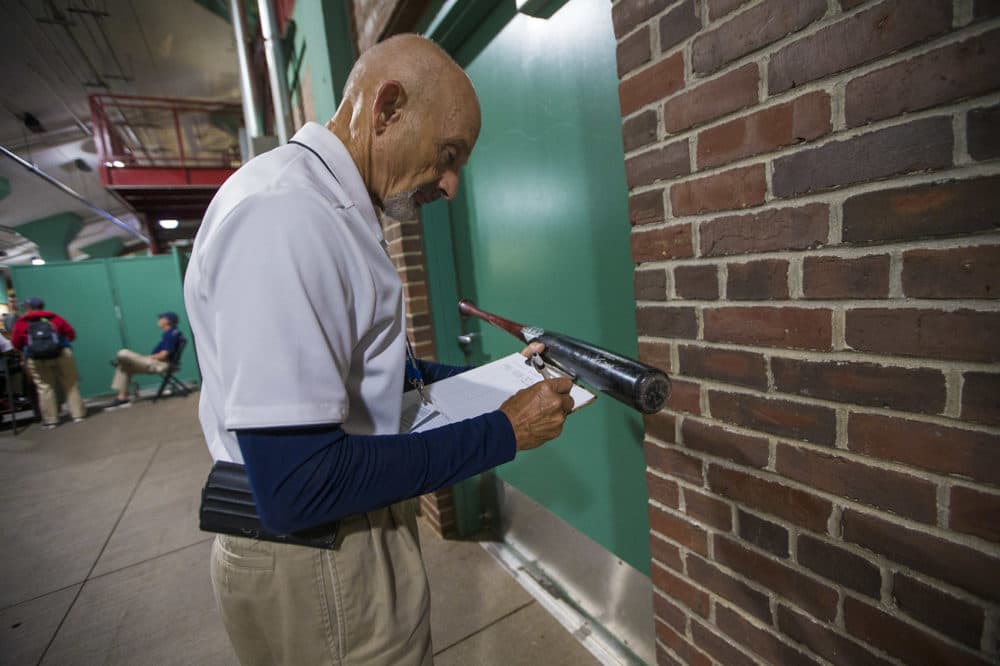
It's 90 minutes before the first pitch at Fenway Park. Outside the visitors’ clubhouse, authenticator John Martino talks to Houston Astros clubhouse manager Carl Schneider. They’re going over their game plan.
Martino asks Schneider, “Anything special today?” Schneider says, “No, just the lineup card and any broken bats we have.”
Lineup cards and broken bats — the typical remnants of your typical baseball game. But the fact that they played a role in a Major League Baseball game makes them special. Cool, in fact — and collectible.
That’s where the authenticators come in. They exist to protect MLB’s fans, its history and, of course, a large money-making enterprise.
'We Have Authenticated Urinals'
For every game during the regular season and playoffs, MLB’s authenticators are ready to certify items with tamper-proof hologram stickers. They’ll tag bats, balls, bases, jerseys, retired pieces of the Green Monster, champagne bottles from playoff celebrations — pretty much, you name it and MLB will authenticate it.
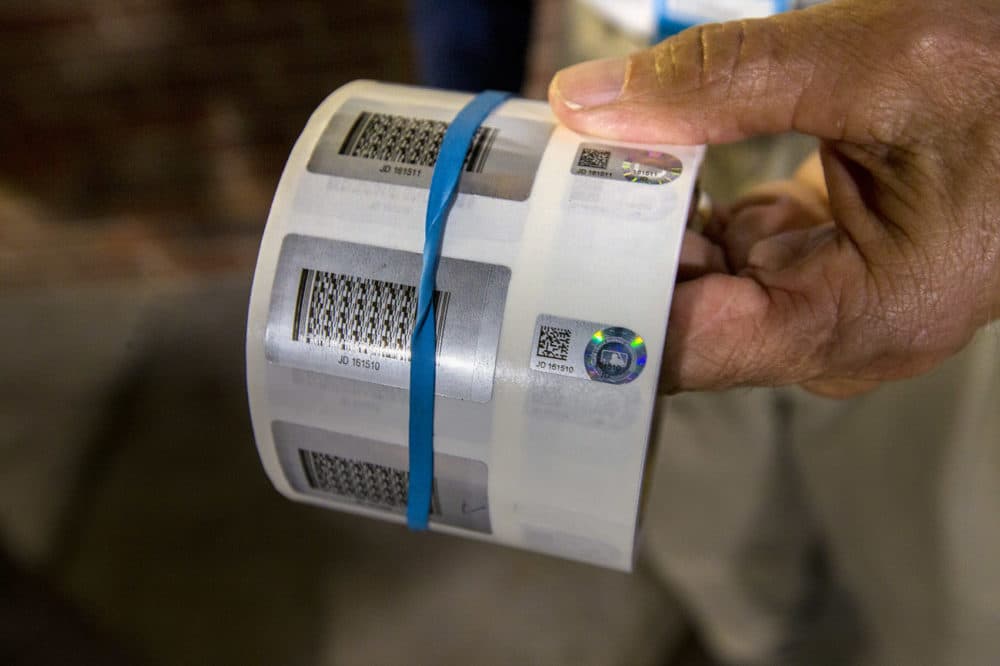
Really, anything.
“We have authenticated urinals from Busch Stadium [in St. Louis],” says Michael Posner, director of MLB’s authentication program. “You know, 'Don’t take my word that this urinal is from Busch Stadium. Here’s the hologram on it where the authenticator went into the clubhouse and put it on there.' Fortunately, the stadium was not in use at that point so it wasn’t as difficult a process. If we see it there, we can witness it and we can authenticate it.”
So, you might be wondering, what’s the market like for used urinals?
“As it turns out," says Posner, "that urinal was purchased by a urologist for a couple thousand dollars at auction."
But it was the money paid for autographs, not urinals, that led Major League Baseball to establish its authentication program.
It all started with the FBI’s Operation Bullpen in the late 1990s. The sting operation exposed a network of memorabilia forgers. Back then, law enforcement estimated that more than half of all autographs for sale were fake, and criminals were making millions.
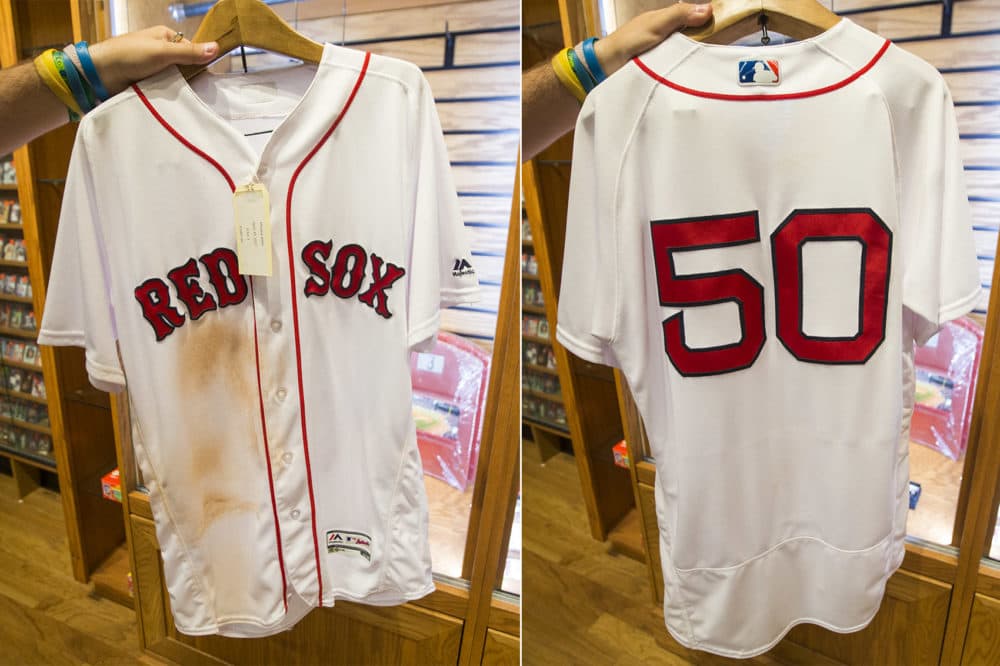
That prompted Major League Baseball to increase its anti-counterfeiting efforts and improve the weaknesses in its authentication process.
“Back in the late '90s when Operation Bullpen took place, the only way you got something authenticated was a piece of paper that was a certificate of authenticity,” says Posner. “We realized that, because that could be forged just as easily as a fake autograph, there needed to be another process, another step that helped protect the fan."
Every season, baseball’s authenticators hologram nearly 1 million items. But it’s not just for the fans, it also protects a lucrative revenue stream.
Game-used memorabilia is sold at every Major League ballpark. At the Red Sox souvenir shop you can buy an autographed, authenticated, game-used Mookie Betts jersey for $3,000, a game-used base for $300, a bottle of field dirt for $20 and countless other collectibles big and small.
MLB won’t disclose sales figures. But Posner says authenticated memorabilia is a rapidly growing business.
No wonder MLB wants to make sure it’s all carefully verified.
Grabbing A Broken Bat
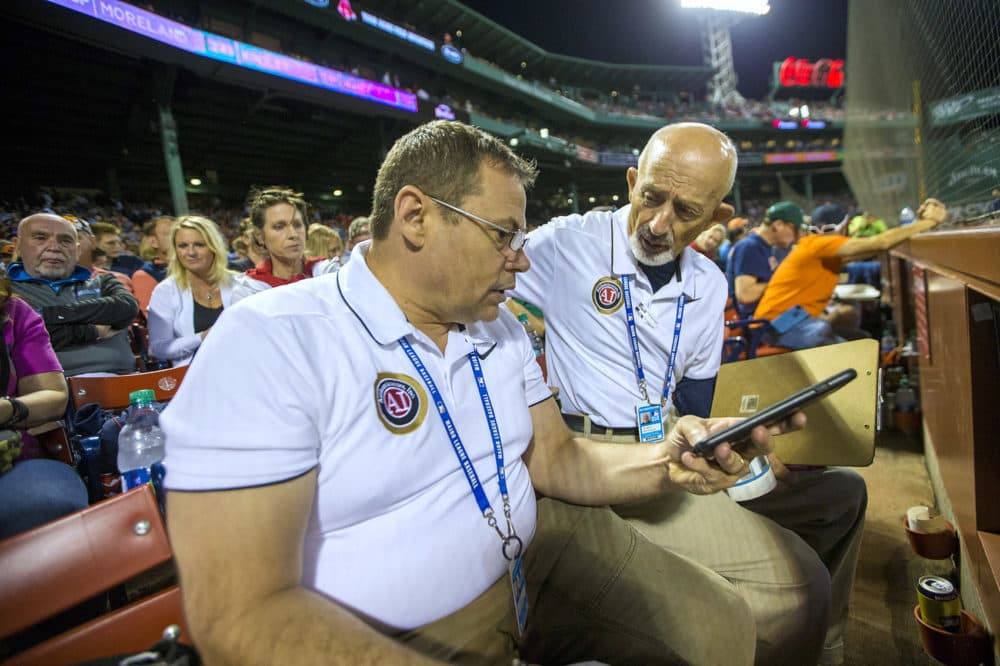
At Fenway Park, the authenticators sit in front-row seats on the third base side, about 30 feet from home plate. The seats are so close to the action that you can clearly hear the ball pop into the catcher’s mitt. More importantly, from their vantage point, the authenticators can clearly see all the action on the field, especially at the plate where they keep an eye on game-used bats and balls.
In the second inning of a September game, when Astros right fielder Josh Reddick breaks his bat, authenticator Martino gets to work.
“I'm going to get the bat from the bat boy and hologram it as a game-used broken bat,” says Martino as he heads back to the visitors’ clubhouse. Once he gets there, the broken bat is passed out the back door for authentication.
Martino looks over the broken bat, slowly turning it around in his hands. “I’m going to record who made the bat, the numbers, anything that makes the bat unique,” he says. Then, he jots down a few notes on a piece of paper and places a small hologram on the bottom of the bat. Next, Martino takes out an iPad and registers the broken bat in MLB’s database of game-used memorabilia.
The broken bat is now officially authenticated.
And what happens to this newly minted collectible?
“I just give the bat back to Houston,” says Martino. “Because this will go back with them and they'll sell it at their souvenir shop.”
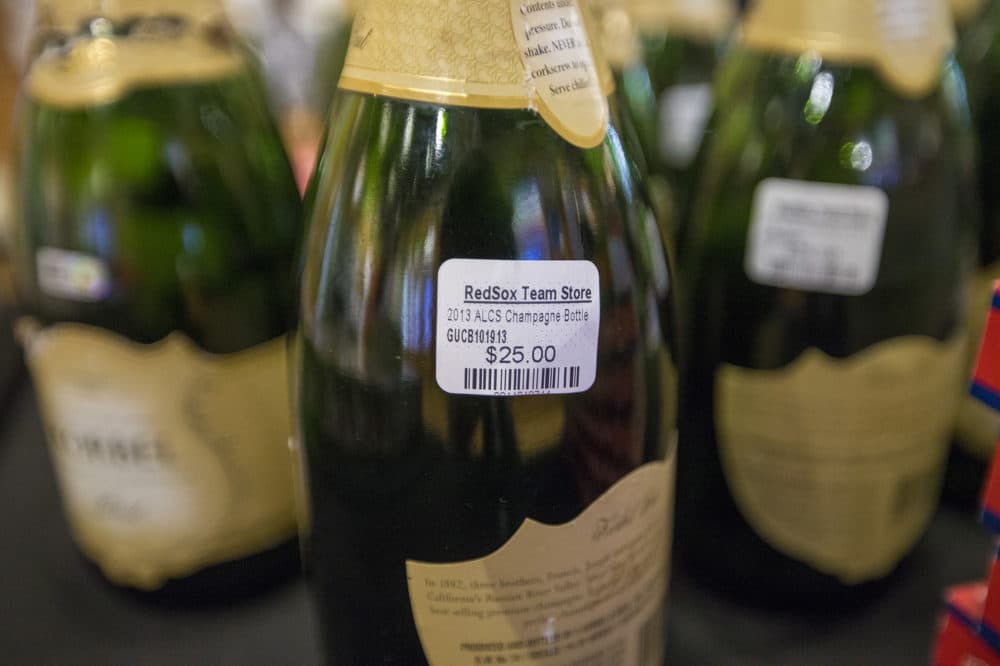
Taking All The Champagne Bottles Home
MLB’s authentication process is modeled after the chain-of-custody procedures used by law enforcement. That means authenticators have to witness any broken bat or any jersey signing that they hologram.
It helps that all the authenticators have law enforcement experience.
Martino is a retired police officer and he takes chain of custody seriously. So seriously that after the Red Sox won the World Series in 2013, he collected all the champagne bottles used in the post-game celebration and drove them home. The bottles were too wet to hologram after the big win.
“The next morning when my wife got up, I said, 'Come with me, I want to show you something,’ ” recalls Martino. “I opened up the car, which smelled like a brewery. And she said, ‘Oh you brought everything home to recycle it. That's nice.’ I said, ‘No, not quite.’ Then, I took all of the items out, dried them off, authenticated them all, and brought them back to the park.”
The playoffs keep baseball’s authenticators busy — and they often produce the most expensive collectibles. The most expensive item ever authenticated? The Red Sox lineup card from Game 4 of the 2004 World Series, which ended Boston's 86-year championship drought. The winning bid at auction? $165,000.
Given the memories and the money at stake, Posner figures there will always be a need for authenticators.
“You know, you build a better mouse and you build a better mousetrap and then you build a better mousetrap and you build a better mouse," he says. "It’s a constant chase and we’re always trying to stay ahead of it.”
The authenticators will keep trying to stay ahead this week, as players chase the ultimate piece of memorabilia: a World Series ring.
This segment aired on October 22, 2018.
